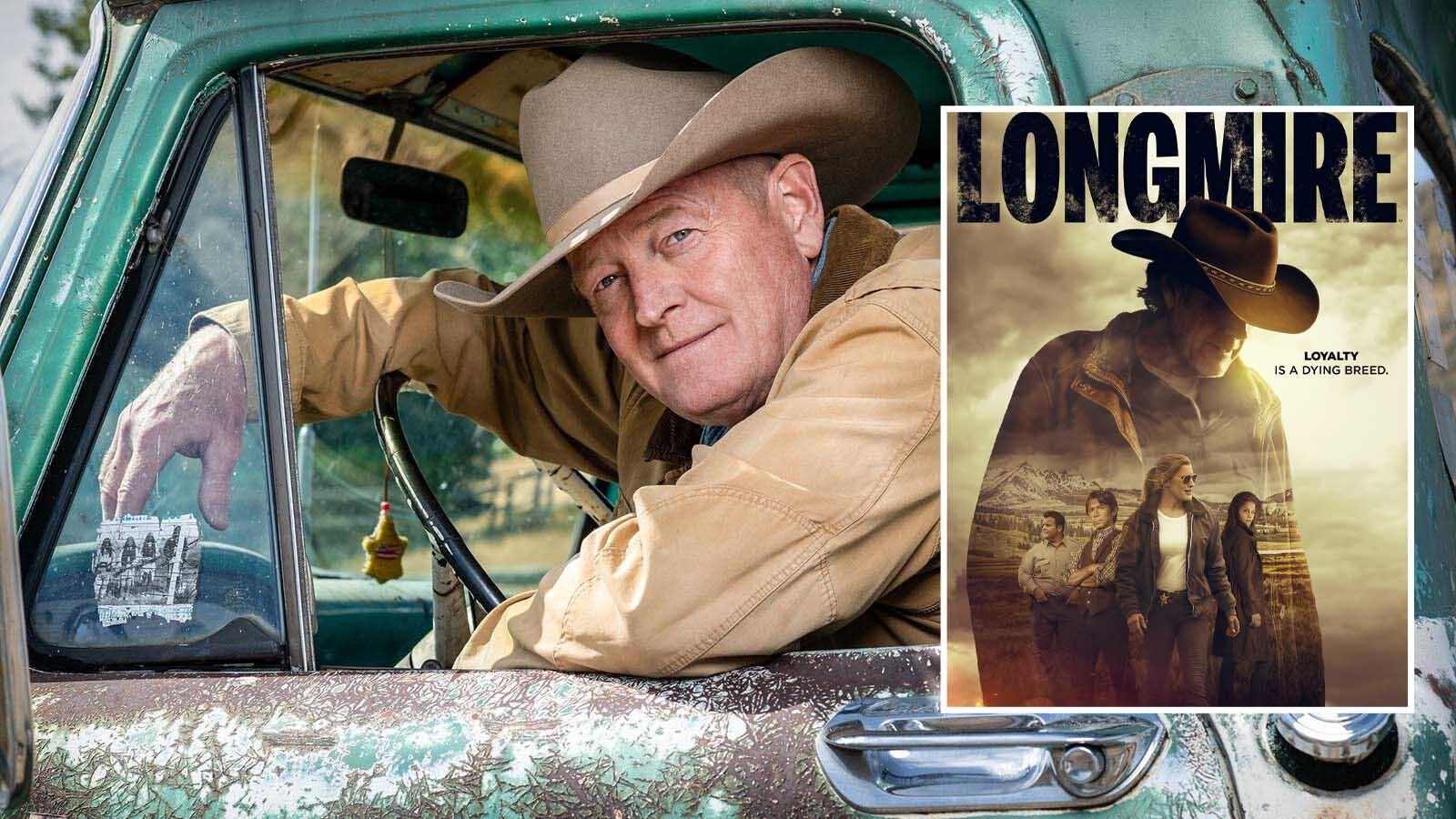A few miles east of Newcastle, Wyoming, along the banks of the Salt Creek and surrounded by sagebrush was once a roaring Wild West frontier settlement known by residents as Tubb Town.
Settled and abandoned in 1889, Tubb Town — aka known also as Field City, Tibville, Tubtown and Tubville — was a boom-and-bust settlement in the Black Hills of the Wyoming Territory.
Here, saloons, dance halls and brothels far outnumbered all other types of business.
Sheila Hart, daughter of Tubb Town dairyman A.M. Nelson, wrote of her brief childhood in that town, “If ever a town was bred in greed, born in bawdiness and buried in dishonor, it was that lusty devil’s toadstool on the banks of Salt Creek.”
The town had a rough reputation, even by Wild West standards.
In August 1889, the Sundance Gazette described a brawl that involved nearly the entire population. This Tubb Town takedown resulted in the local deputy quitting in disgust and watching the fights from a safe distance.
“That always-lively place, Tubb Town, was the scene of unusually stirring times Saturday last,” the Sundance Gazette reported. “At one time a number of fights were going on in the street, and Deputy Swisher was worn out trying to stop them.
“No sooner would he quell one of the melees than he would see another fight going on a little ways off. He finally quit in disgust, and told the boys to fight all they wanted, but he would kill the first one who tried to use a gun.
“The trouble was caused by a fistic rivalry between graders and miners, large numbers of whom were in town that day. From all accounts, an officer in a town like Tubb Town couldn't be paid all he earns as a good many frequenters there want to deal out misery to him in big chunks.”
Tubb Town’s Boom
The town was founded with high hopes and the lure of profit by a South Dakota businessman who had dreams of building his own city in the sagebrush.
“Word reached Custer, South Dakota, by way of grapevine that the railroad was being built into Wyoming Territory,” wrote Mabel Brown of the Rapid City Journal in 1964. “DeLoss Tubbs, a Custer merchant, thinking he knew where the road would be built, set up a store on the east bank of Salt Creek not far from the old stage station near Jenney Stockade.”
It was in the spring of 1889 that DeLoss Tubbs came over from Custer to set up a road ranch on Salt Creek, and others followed expecting to reap rich rewards when the railroad hit this point.
“He stocked his store with staple goods — flour, coffee, sugar, bacon, matches, overalls and tobacco,” Brown wrote. “Tubbs enjoyed a good trade with the railroad crews, cowboys, home seekers on their way westward and others from Black Hills towns, on their way to greener pastures.”
The new settlement on Salt Creek was officially named Field City by Tubb, but his chosen name was lost in the scramble as people flocked there to live in what they called Tubb’s Town in his honor.
“The first city ordinance of Tubb Town,” wrote Dick Rebbeck, the Rapid City Journal Outdoor Editor in 1968, “was that all strangers must pay a toll sufficient to ‘set ‘em up for the bunch.’”
This meant that the men arriving in Tubb Town would be required to buy a round of drinks for everyone in the local saloon.
“That set the tone for Tubb Town development, despite the hopes of more sedate would-be residents,” Rebbeck wrote.
The Saloon Helps The Town Succeed
F.R. Curran, another Custer businessman, had also got the word that the railroad was on its way.
Curran operated a saloon and gambling establishment in Custer and decided to expand into the Wyoming Territory. He arrived on Salt Creek almost at the same time as Tubbs.
According to Brown, Curran said, “A store is all very well, but if a town is to be permanent, there had to be a saloon. Folks would stop at the store, fill up their wagons and go on. If there was a saloon, however, they would fill up and stay.”
Once he arrived on the banks of the Salt Creek at Tubb Town, Curran took no chances on losing a single customer from the thirsty railroad trade. He immediately set up his bar and began to serve drinks. He added such refinements as walls and a roof later.
The motto of the new town, Rapid City journalist Lois Miller wrote in 1958, was simple and to the point: “When in Tubb Town, do as the Tubb Towners do.”
Otherwise, you could pick up your bed roll and take to the hills.
Some of the rougher element had surged into Tubb Town, but it had many good substantial residents. The town grew, and by July 1, 1889, there were two general stores, two restaurants, another saloon and dance hall, a livery stable, Chinese laundry and a milk ranch.
“Salt Creek was a poor location for the milk ranch and also for the laundry,” wrote Brown. “The salt water wouldn’t mix well with the milk and neither would it make a lather. Drinking water and water for washing was hauled in from Stockade Beaver Creek in barrels.”
Tubb Town flourished.
By August, businesses of many types were represented, even a newspaper, the “Stockade Journal” published by the 18-year-old son of dairyman Nelson.
In late summer, a Presbyterian Sunday School was opened with the four Nelson youngsters and six children of Frank McLaughlin, the druggist, enrolled.
Before a church could be built, though, it was all over for Tubb Town and its speculation on railroad intentions. The railroad bypassed it.
The End Of The Line
The railroad was trying to deal with Joseph Spencer, owner of the LAK ranch, and convince him to sell prime land to make way for the railroad.
He refused to sell his fields for the price offered by the railroad and, unable to reach an agreement with Spencer, the Burlington built around his ranch and thus bypassed Tubb Town.
On Sept. 10, 1889, the first lots in the new town of Newcastle were sold, and within 48 hours Tubb Town was deserted.
“Homes and business were left just as their owners walked out of them, other buildings were moved to Newcastle,” wrote Miller. “Buildings in Newcastle were unable to house all the new citizens. Those sturdy pioneers didn’t let that bother them. They meant to stay, so they settled down in dugouts. All along Cambria Creek there was a length of about a quarter of a mile of the dug-outs.”
The enterprising Curran was among the rush to claim a lot in Newcastle. Never one to neglect his customers, he set his bar on a wagon and served drinks all the way to the new town.
Ghost Town
A historical sign marks the spot where the people of rowdy Tubb Town once lifted their drinks to a golden future.
Few even remember this short-lived railroad town. Weston County resident Don Johnson said that there is nothing left to mark where the town once was.
“I lived where Tubb Town used to be,” Johnson said. “It is just sagebrush as far as you can see.”
The local historical committee is working to save the story of Tubb Town and he other ghost towns in the region.
Lucas Keeler, vice president of the Wyoming Historical Society and board member of the Weston County Preservation Board, told Cowboy State Daily that it is important for future generations that we remember these rowdy times in our Wyoming history.
“They were wild, temporary towns, but at the same time they were important because there wasn't much around,” Keeler said. “There's so many stories from the late 1800s and early 1900s that have vanished, essentially. That’s why we are being proactive on getting on top of preserving both the buildings and stories.”
One last reminder of Tubb Town is on a back street in Newcastle. A statue of a prospector and his mule, Tubb Town Trixie, stand as a silent reminder that Tubb Town is not completely forgotten.
“Old ghost towns never die,” wrote Dick Rebbeck in 1968 about Tubb Town. “At least not where there are painters and photographers to preserve the scene, writers to resurrect the spirit and historians to record the facts of the early West.”
Jackie Dorothy can be reached at jackie@cowboystatedaily.com.










